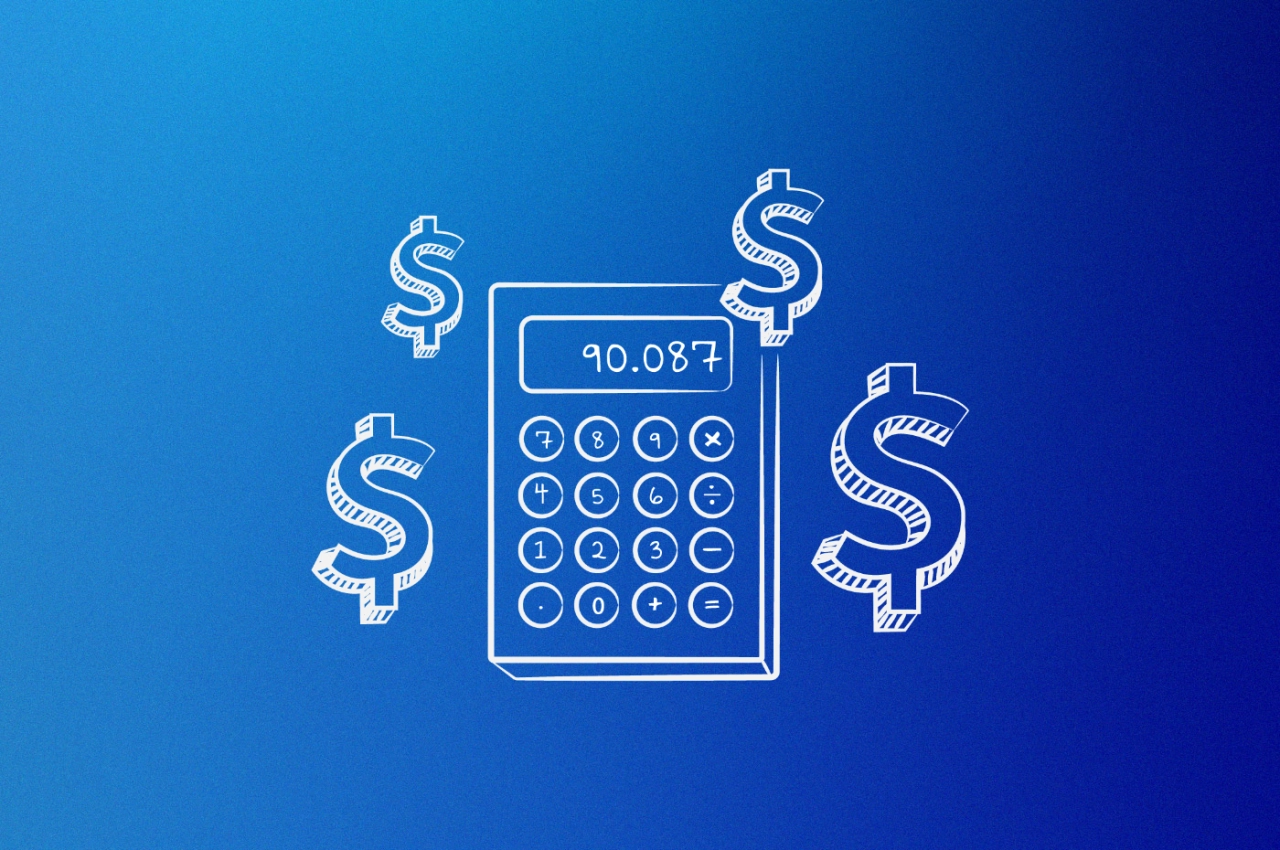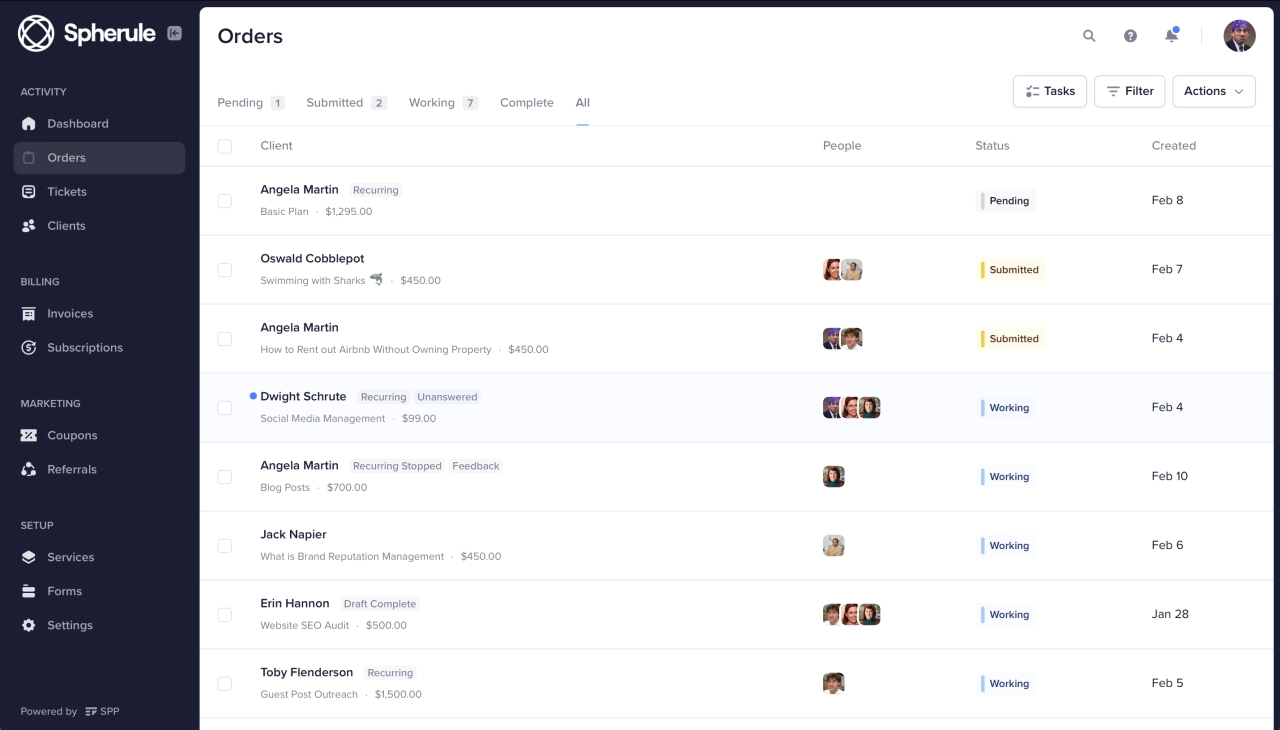- A pricing strategy is the method that a business uses to set and adjust the prices of its products or services to increase revenue and market share.
- Businesses can use different pricing strategies, such as cost-plus pricing, value-based pricing, and dynamic pricing, to achieve their objectives.
- The choice of the pricing strategy depends on a variety of factors, including the target market, competition, and the product or service being offered.
Setting prices for your product or service shouldn’t be a shot in the dark. Instead, it should be guided by an agency pricing model that helps you maximize your profits and revenue.
If you’ve realized that you need a pricing strategy to make your business succeed, this guide is for you. I’ll help you get comfortable with the pricing strategies and tactics needed to run a lean business that is highly profitable.
What is pricing?
For agency owners, comprehending the concept of pricing is crucial in order to craft a successful pricing strategy. Pricing refers to finding the optimal price point at which a product or service should be sold. The price is the amount a customer pays, while the cost reflects the seller's investment in that product or service. The goal is to maximize profits while maintaining market competitiveness.
To understand what pricing is better, keep the following objectives in mind:
Profit maximization: Setting prices to achieve the highest possible profit.
Market penetration: Using low pricing to attract a large number of customers quickly.
Customer perception: Influencing customers’ perception of quality and value through strategic pricing.
Volume maximization: Setting prices to encourage maximum sales volume and market share growth.
Cost recovery: Ensuring that pricing service production costs plus a margin for sustainability.
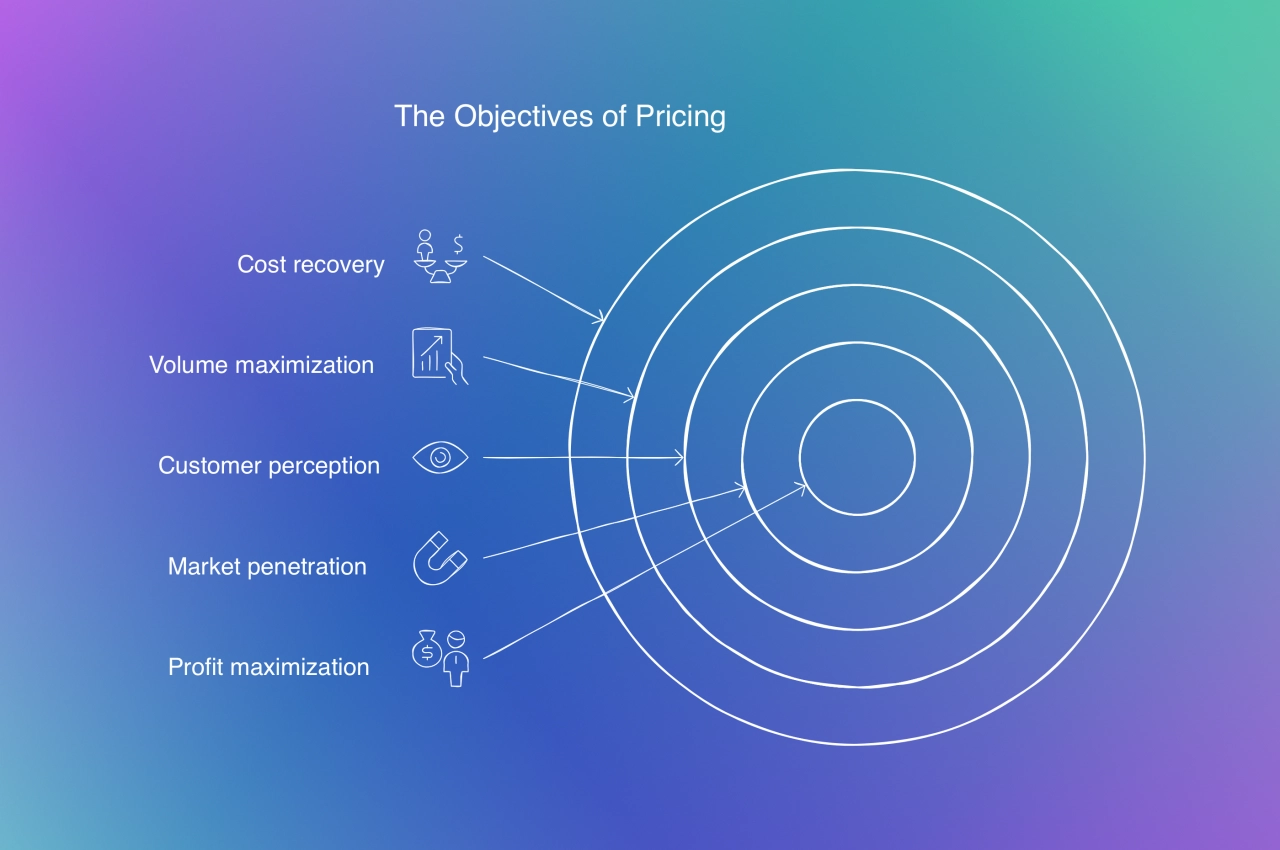
What is a pricing strategy?
Price is the amount of money you charge for your product or service. It’s a measure of the value it creates.
Going by that definition, you’d think it should be easy to calculate a price. After all, you know the magnitude of problems you solve for your customers.
But no, it’s not as straightforward as that.
As Patrick Campbell, CEO of PriceIntelligently, describes it in this article:
Price is the exchange rate you put on all the tangible and intangible aspects of your business.
This means you have to consider elements like how much your clients value your brand, how much they’re willing to pay you to solve their problem, and how much energy and resources were invested in the solution.
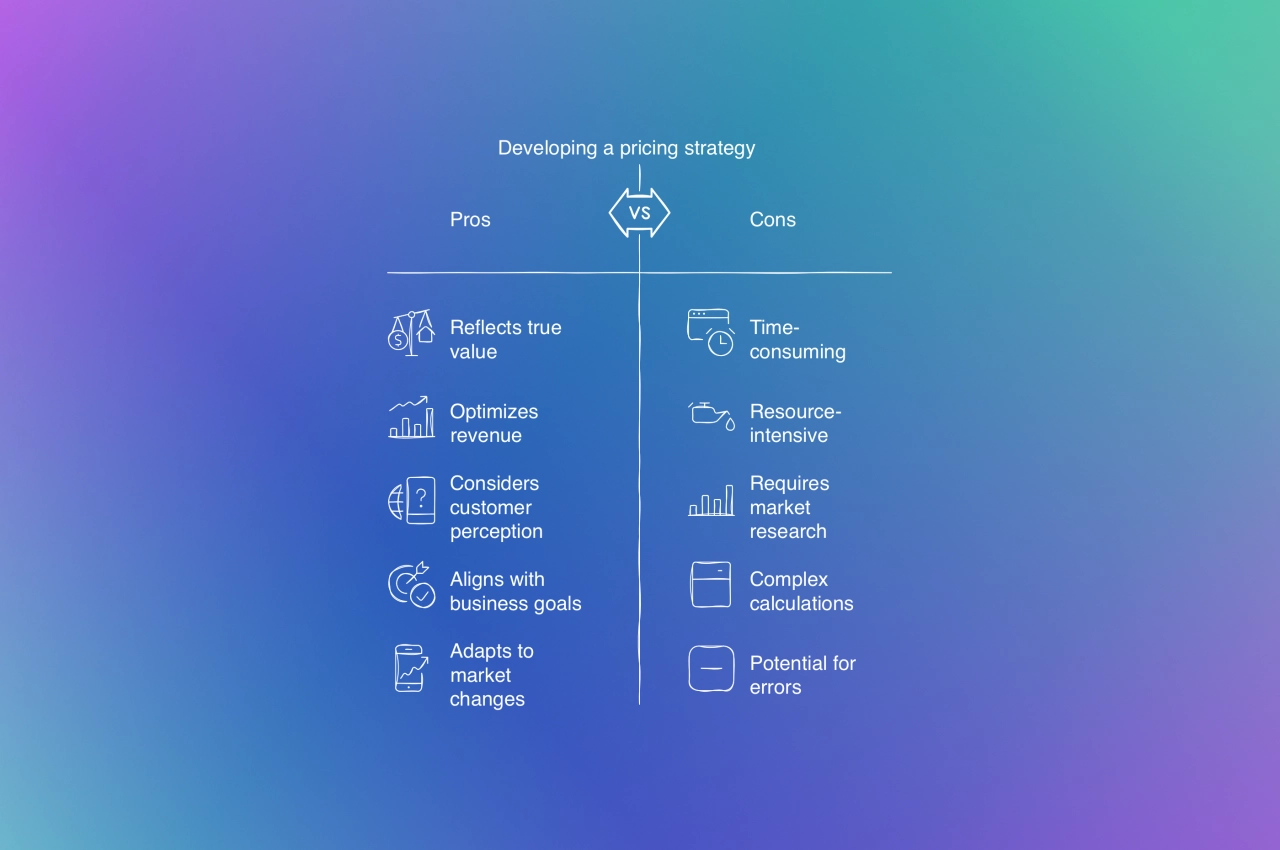
If you want to be sure that you put the right price tag on your services or products, you need a proper strategy.
Think of your pricing strategy as a two-lever mechanism: increase in demand results in an increased price and vice versa. But like Patrick’s quote made clear, there are different variables to consider.
I’ll soon show you a formula for creating a pricing strategy that works for your business.
For now, let’s look at reasons why you should invest time and resources into developing a pricing strategy rather than giving your product’s price an arbitrary value.
The importance of pricing strategy
A well-developed pricing strategy provides your brand with a number of benefits.
Entices the customer to make a buying decision
Price is the primary influencer of purchasing decisions.
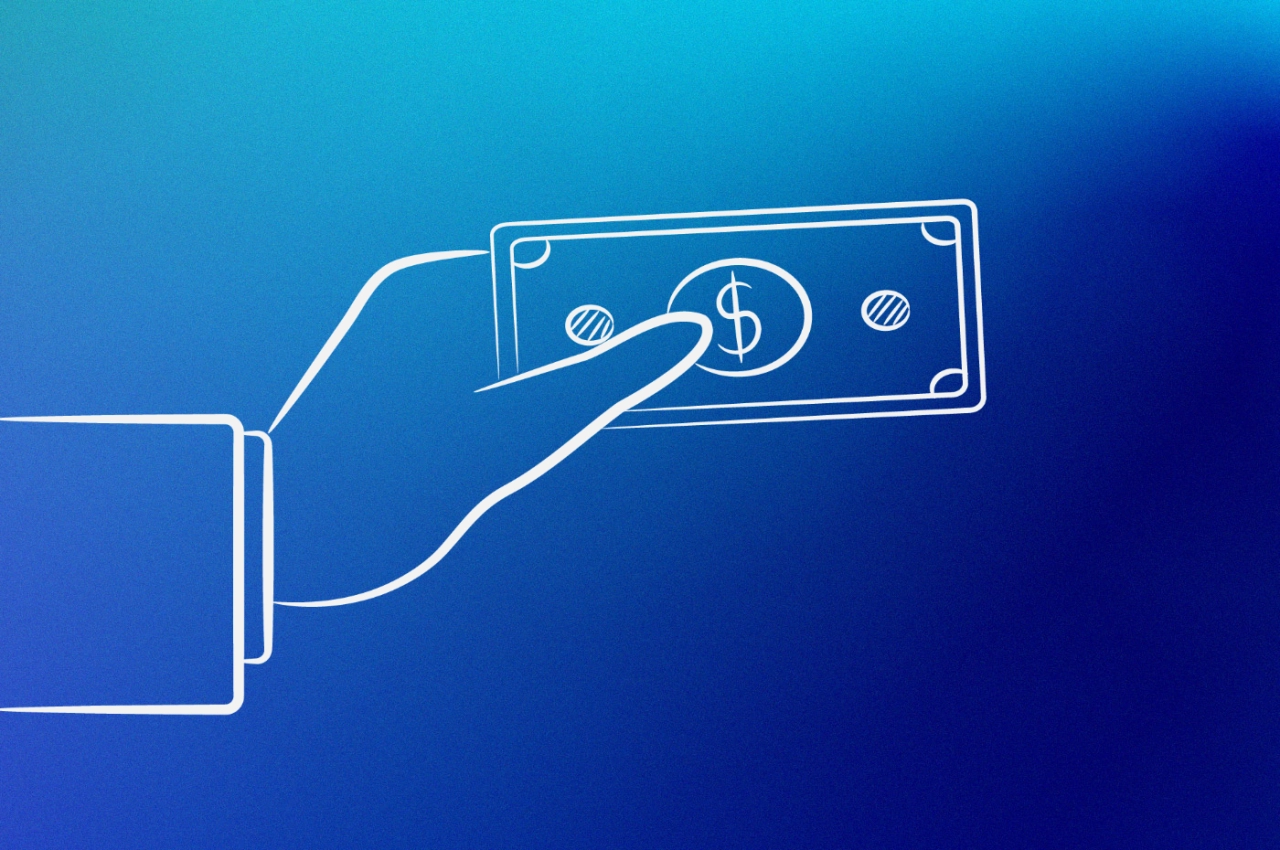
Consumers won’t pay a penny more than what they believe your offering’s true value is. But they also won’t choose it if it’s low-priced, as they might consider it of inferior quality compared to available alternatives.
If you manage to set the ideal price, it’ll immediately convince your prospects to sign up for your services.
Portrays the value of your product
How do you want your product to be perceived, premium or low quality?
The price you choose influences the customer’s perception of your product. A high-priced product implies high quality; and a lower-priced version of the same means lower quality.
Creates customer confidence in your product
When you see a high-priced product, the following words might pop into your head: exclusivity, premium quality.
A low-priced product, on the other hand, will make you skeptical of its value. You’ll try to figure out if there are any compromises you need to make when you purchase it.
Has direct impact on your agency’s revenue
Robert Cialdini, Author of Psychology of Persuasion, said that in “markets in which people are not completely sure of how to assess quality, they use price as a stand-in for quality.”
This is valid for your agency as well, especially if your approach or skill level is different from your competitors. Your customers see a high price as a testament to your quality. So increasing your prices will lead to an increase in revenue.
Generates revenue & profitability
Revenue generation and profitability are two of the most significant impacts pricing has on a business. The selling price of a product or service directly affects the revenue generated by the business. A higher price can result in higher revenue, but it may also lead to lower sales volume if the price is not competitive. On the other hand, a lower price may lead to higher sales volume, but it may also result in lower revenue and profitability.
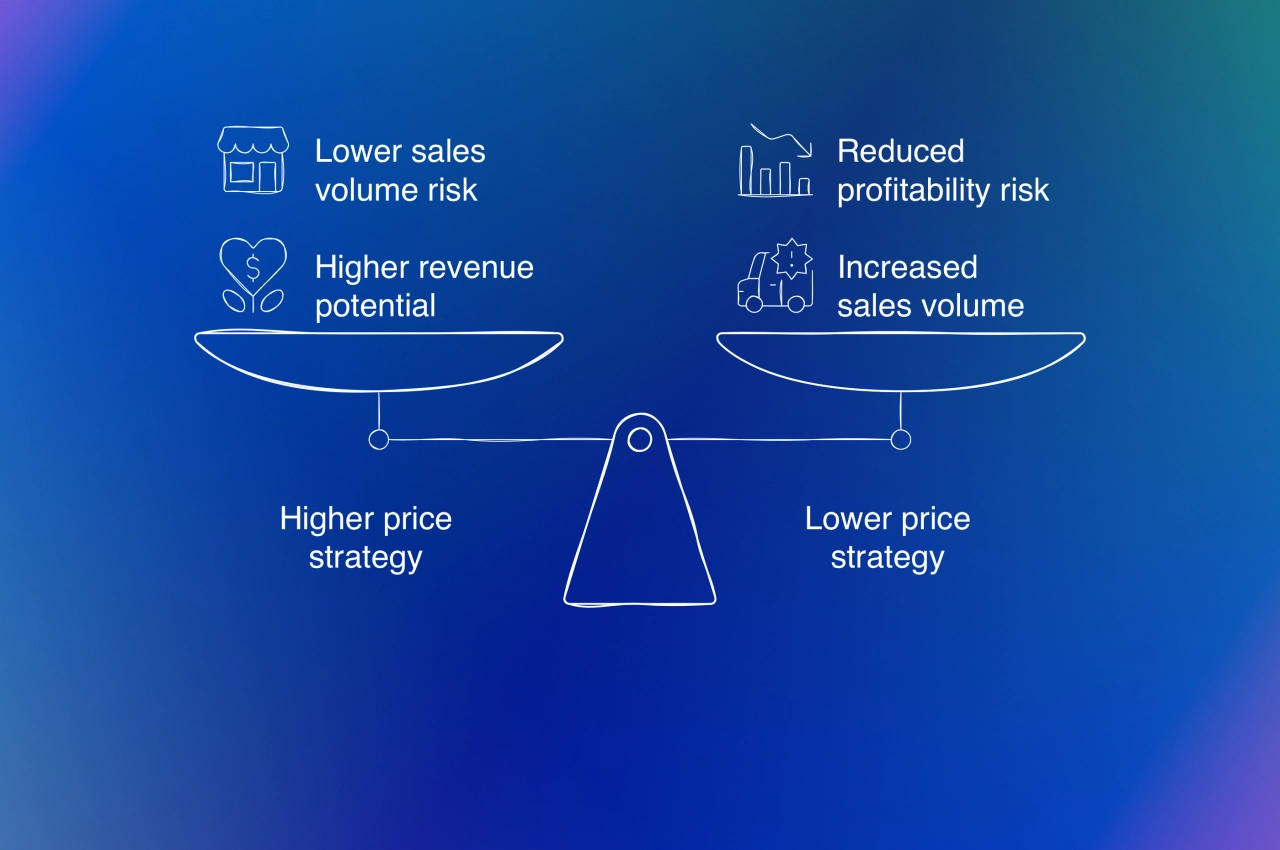
Therefore, businesses must carefully consider their pricing strategy to balance revenue generation and profitability. Striking the right balance is crucial; it involves understanding the market, the value your product or service provides, and how much your customers are willing to pay.
Key factors to consider when setting prices
When setting prices, businesses must consider several key factors to ensure that their pricing strategy is effective. These factors help in crafting a pricing method that aligns with the business model and market conditions.
Production costs
Production costs are a critical factor to consider when setting prices. Businesses must calculate their direct costs, such as labor, software, and overhead, to determine the minimum price they need to charge to break even.
However, production costs are not the only factor to consider, as businesses must also consider market demand, competition, and customer willingness to pay. By understanding the full scope of costs involved in producing a product or service, businesses can set a base price that covers these expenses while also allowing for a profit margin.
Target market and customer behavior
Understanding the target market and customer behavior is essential when setting prices. Businesses must consider the customer’s perceived value of the product or service, as well as their willingness to pay. Customer demand and behavior can vary significantly depending on factors such as age, income, and lifestyle.
Therefore, businesses must segment their target market and tailor their pricing strategy to each segment. By doing so, they can ensure that the price customers pay reflects the value they receive, thereby enhancing customer satisfaction and loyalty.
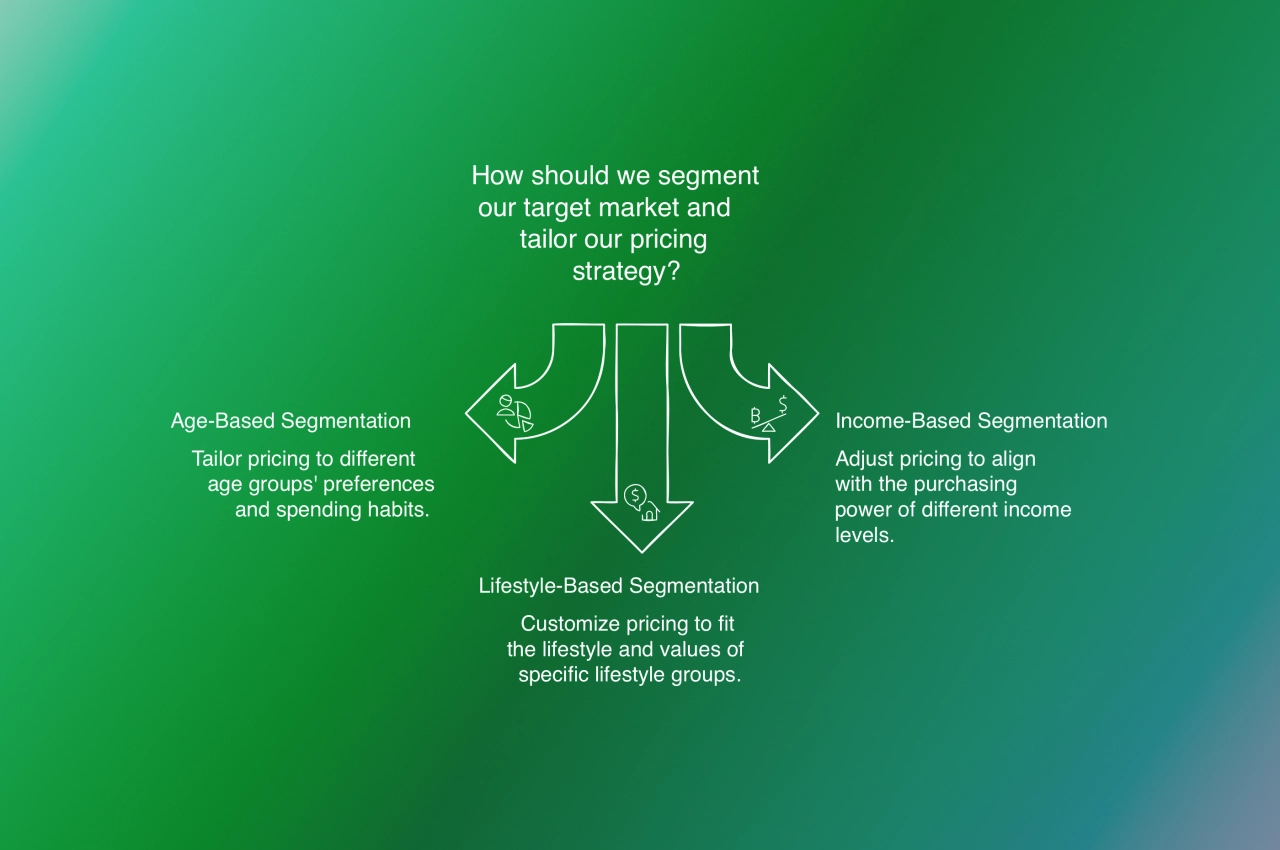
This approach also allows businesses to implement different pricing strategies, such as premium pricing or discounted pricing, to cater to various market segments effectively. Some agencies even create a spin-off that caters to a target group who is willing to spend more money.
Common types of pricing strategy for your business
Common pricing strategies are essential methods businesses can adopt based on their unique models. You’ve seen the sort of benefits a well-planned pricing strategy offers your brand. Now, let’s take a look at different pricing strategies or models you could employ.
1. Value-based pricing
Value-based pricing is a strategy where you set prices based on the perceived value of your brand and service delivery.
The beauty of this pricing strategy is that it works whether you offer a one-off service or a recurring service. What matters most is the quality of work you provide your clients.
2. Cost-plus pricing
This is the simplest method for setting your product’s price. What you do is add a fixed percentage on top of your production costs.
Let’s contextualize it with a very simple example: Assuming it costs you $5 to make a sandwich and you decide on a 50% margin, customers will buy your sandwiches for $7.5.
3. Competitive pricing
If you opt for the competitive pricing strategy, you’ll align your product’s price to that of your competitors. This method of pricing is mostly used in saturated markets that sell similar products.
4. Hourly-based pricing
With hourly pricing, you’re trading your time for money by billing your customers a fixed fee for the time spent on their project. Keep in mind that you might have to estimate the time you’ll spend on a given project, and include it in a proposal. If you opt for this pricing model, check out our case study with Johnathan from SMG who has found a great solution to make things easier for his team and clients.
5. Performance-based pricing
As the name suggests, performance-based pricing is a pricing strategy where you get paid based on the delivery and results of your product or service.
This strategy is popular in the online advertising world, where a vendor could agree to being paid a certain percentage of the revenue generated from new leads. It also works for lead generation agencies where the pricing is linked to the number of leads generated.
6. Project-based pricing
Project-based pricing is the opposite of hourly pricing. Rather than exchanging your time for money, you set a flat fee for specific projects.
This pricing model is recommended for companies who have done projects before, and know how to estimate the time they’ll be spending on them.
7. Dynamic pricing
Unlike other pricing methods where your rates or fees are known, the dynamic pricing strategy relies on variability. What you’re basically doing is selling the same product/service at different prices under specific circumstances.
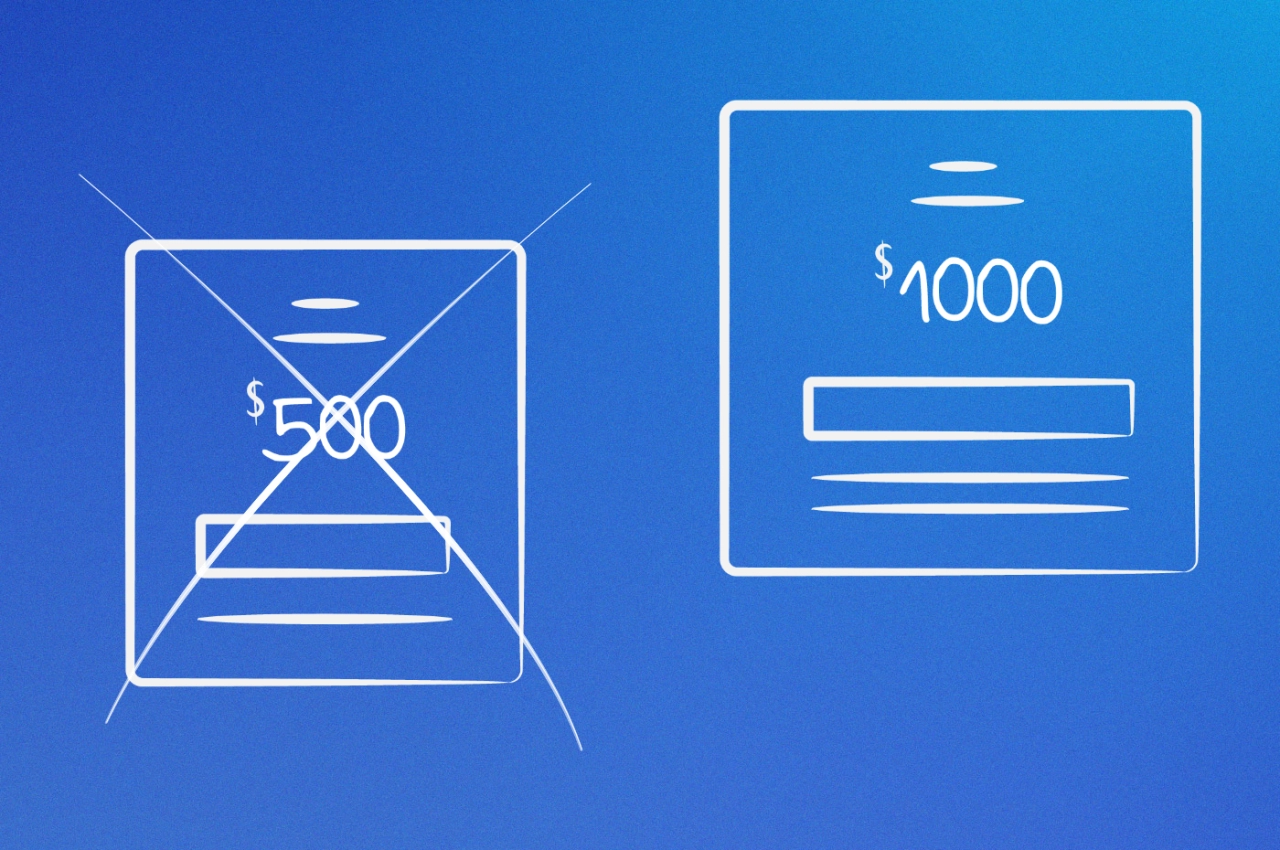
A good example are ride-hailing platforms like Uber. When the demand is high, prices increase automatically.
8. Penetration pricing
Companies using the penetration pricing strategy target to become a market leader in their segment. This works well for VC-backed businesses that have enough money to spend on marketing. The introduced price is lower than that of the competition, forcing them to make changes to their business model.
9. Price skimming strategy
The idea behind price skimming is to do extensive market research and find the highest price your target customer would pay. Once you’ve built your customer base, you gradually lower the price to capture a more price-sensitive segment. The strategy is the exact opposite of the previously mentioned penetration pricing model.
How should you think of your pricing strategy?
As you already know at this point, setting a price for your product or service can be a difficult task.
According to Rafi Mohamed, founder of consulting firm, Pricing for Profit, the key to success is changing the way you think about prices.
Let’s look at the three mindset shifts mentioned by Rafi.
Pricing has very little to do with your cost
If you are stranded on the roadside under a heavy rain and a seller attempts to sell you his $10 umbrella for $30, would you buy it?
You most likely would even though the price of the umbrella increased despite the fact that the vendor’s costs didn’t change.
Price is all about your customer’s next best alternative
Continuing with the umbrella analogy, if you’re caught under the rain, you have little option but to agree to the vendor’s price.
Why? Because there are no alternatives that can provide the value that umbrella promises at that moment.
If you want greater freedom with your pricing strategy, offer a unique value proposition that your competitors can’t beat.
The key to an effective pricing strategy is to think like your customers
The umbrella seller understood that you’re likely to pay a premium price for the umbrella at that moment.
This, perhaps, is the most important thing you should know about pricing. Understand your customers to find out what they think is unique about your product and set your price accordingly.
Tools to find the best agency pricing strategy
General
Productized
Define your buyer personas
Buyer personas are simply documented profiles for the types of customers you target for your product.
As I mentioned earlier, a winning pricing strategy can compel your prospect into making a buying decision. To do that, you need to have a clear picture of who your customer is.
That’s where the buyer persona comes in.

In a Google Sheets or Docs file, document the different types of prospects that are most likely to turn into customers for your product.
There are different ways to classify these personas: team size, budget, team roles, industry.
Write down everything you know about your prospects, so you can define an optimal price for them.
Validate hypothesis about persona
You know a lot of things about your buyers but it’s not enough to assume these things are true.
Validate your assumptions by talking to your customer base.
There are a few of pieces of information in particular that you want to validate regarding pricing.
Demographic data: In a B2B environment, this could mean the size of the team and the roles of your ideal customer persona.
Relative value of products/features: Are you clear on what your different audience segments want out of your product? One way to find out is to set up a survey and ask your personas to choose which features are the most important to them.
Service/product packaging. You now know that buyer persona A wants this set of features and functionalities, so you can include them in a specific pricing package.
Pricing data: Three sets of questions are important to get your pricing data. Ask your customer base:
At what point is this product so expensive that you would never consider purchasing it?
At what point is it expensive but you’ll still consider purchasing it?
At what point is it a fantastic deal?
At what point is it too cheap that you question the quality?
Note that when I say customer base, I don’t mean your paying customers only. Ideally, the participants of this survey should be your current customers, prospects that know of your brand, and leads that fit your personas but haven’t heard of your brand.
Analyze patterns and make decisions
Once you compare the collected information, you start to get a sense for what the different buyers care about. This will help you see the bigger picture, especially regarding their willingness to pay for services, allowing you to make pricing decisions.
To do that, look for the biggest differences between each consumer.
For instance, if buyer persona A only cares about the product’s core functionality and is willing to pay $60 for it, set this as a basic pricing tier targeted at Buyer Persona A.
On the other hand, Buyer Persona B might want the core product including a few integrations and is willing to pay $100 for it.
The goal is to group your ideal customers into about 3 different tiers to cover most of them, allowing you to set up a simple pricing page that leaves no questions open.
It’s not always that simple, though. Sometimes there might not be a significant difference between your different personas. In that case, use consumption-based tactics to define pricing packages for your product/service.
This is rather popular among productized services that rely on monthly recurring subscriptions. The cheapest plan could allow you to request four design tasks per month, while a premium plan is unlimited.
Regularly conduct pricing analysis
This step is about making your pricing strategy part of a standardized process.
Your market, customers, and product are under constant influence of changes. Why should your prices be any different?
Regularly take the pulse of your customers to assess their valuation of your product and introduce new prices based on a pricing analysis.
How to conduct a pricing analysis
Pricing analysis is the process of examining your pricing strategy against market demands. You’re assessing if the prices of your product/service is fair and reasonable. Here’s how to conduct the analysis step by step.
Review the true cost of your service
First, you want to have a sense for what it costs to create your product. Account for fixed and variable costs involved in the creation of your product and subtract them from the price you have set. This is also known as a pricing strategy based on cost.
Understand how your market base reacts to your current pricing structure
As you’ve seen throughout the course of this article, you can’t get your pricing right if you ignore your customers. The same is true for conducting a pricing analysis.
Organize surveys, questionnaires, and focus groups for your customer base to discover what they think of your product and the full range of prices they might be willing to pay for it.
Analyze your competitors’ prices
Compare your product’s prices to those of your competitors.
Direct competitors offer the same product or service as do; they might even have a similar value proposition. Try to understand which strategy they used to set their prices.
Consider legal or ethical price limitations
Depending on your industry, there are certain pricing practices that can land you in hot water if you don’t stay clear of them.
Deceptive pricing, predatory pricing, and price fixing are all frowned upon by the law. While you’re fine-tuning your pricing strategy, make sure not to exceed ethical limitations.
3 pricing strategy examples
To help you visualize the outcomes of pricing strategies, I’ve compiled a short list of pricing models.
Value-based pricing: Guest Hook
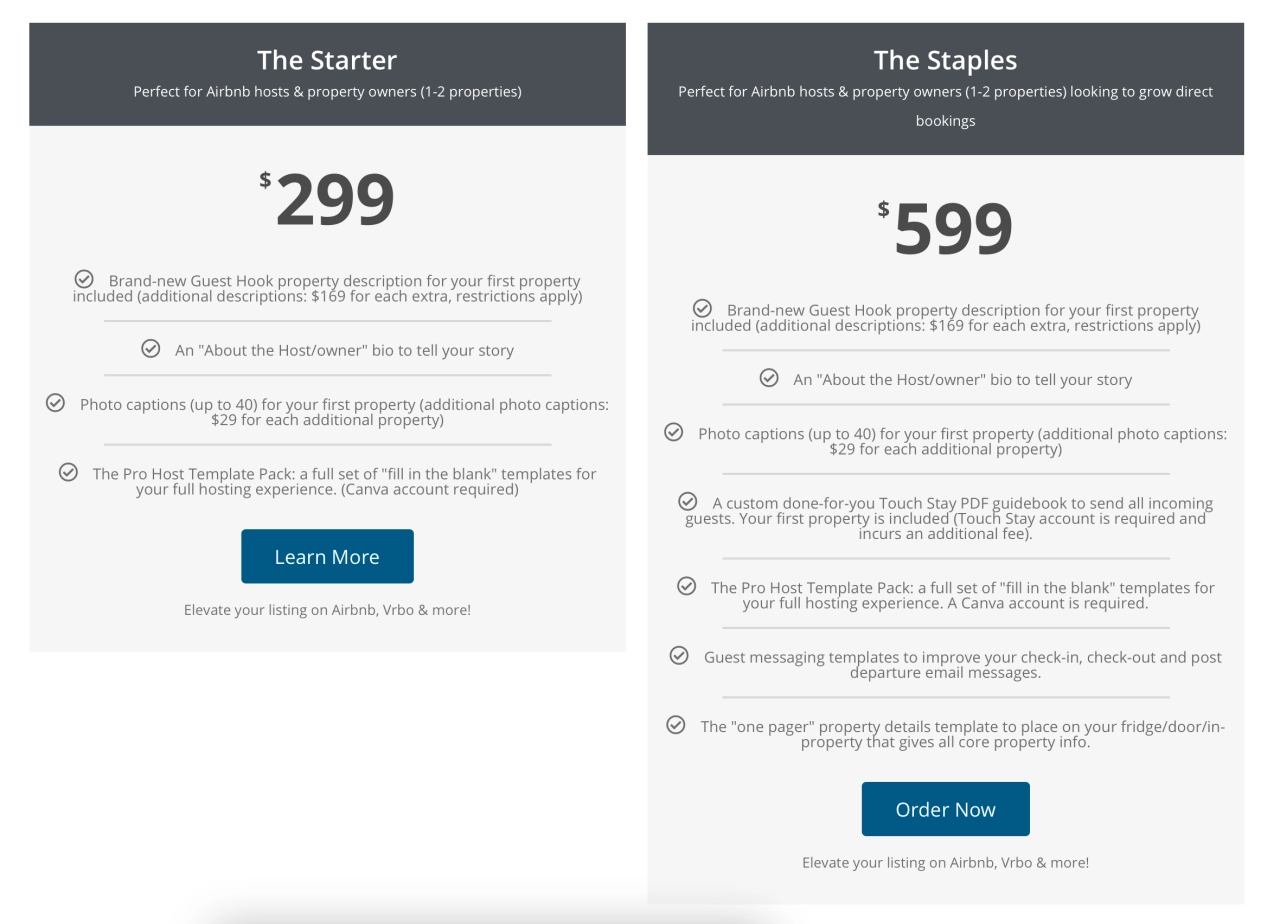
Guest Hook offers multiple service levels that customers can choose from based on the magnitude of value they want to receive from the agency.
The tagline for each level tells the customer what to expect in exchange for a fee.
Dynamic pricing: JetBlue
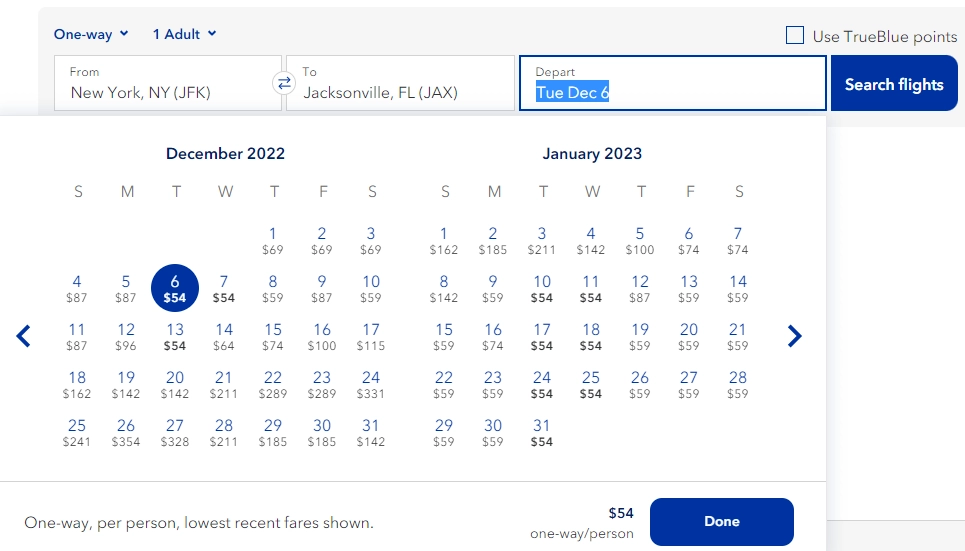
Buying airline tickets is usually an interesting game as you’re never sure how much you’ll pay for a flight. JetBlue, an American airline, is no exception. The screenshot above shows how the same flight varies throughout the month.
To get a better understanding of these price variations and how airline pricing strategy works, it’s worth taking a closer look at the factors influencing these changes.
In the agency world, this pricing strategy is rare. It could be possible to dynamically update the pricing based on how much the services of an agency is in demand. The more it is in demand, the higher the pricing.
Project-based pricing: Chatty.so
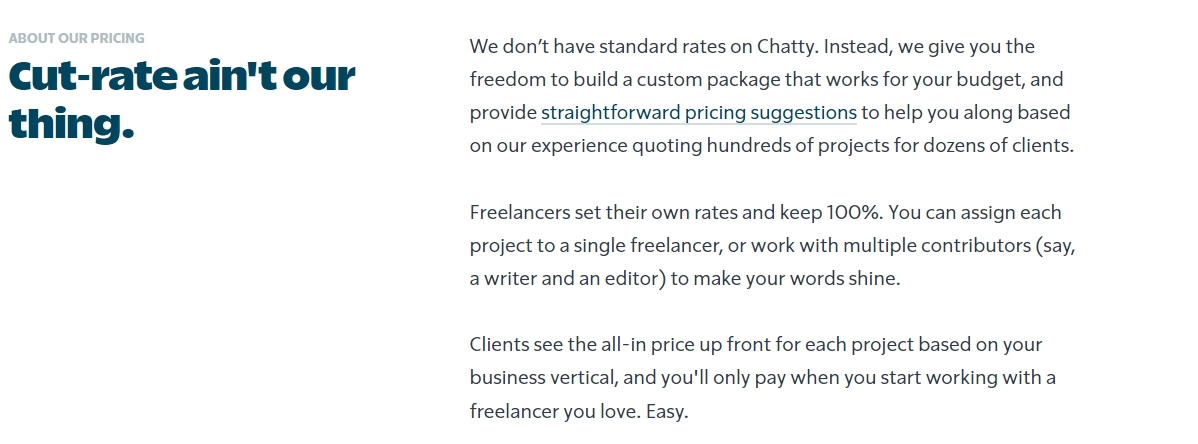
Chatty.so was an online editing marketplace. The service didn’t offer its customers standard rates. Instead, its users were able to build custom packages based on their budget and work scope. This worked because customers didn't have to pay an hourly rate for any editor they work with. Instead, they were able to focus on the value of the outcome and pay accordingly.
Pricing strategy FAQ
Which pricing strategy is best?
There’s no one-size-fit-all strategy for every business model. But for an agency, we recommend that you try hourly pricing, value-based pricing, or project-based pricing.
What is the simplest pricing strategy to use?
Cost-plus is the simplest pricing strategy to try out. You just have to add a percentage-based markup to your product cost.
How do you determine the selling price of a product?
You can determine a price for your product by using the strategies and tips in this article. The crucial thing is to create a pricing strategy that helps your product grow.
What factors determine the most appropriate pricing strategy?
Important factors to consider when choosing the most appropriate pricing strategy is the value of your service or product, market research, customer expectations, and the current state of the economy.
Why is pricing strategy important?
Without a pricing strategy in place, a business cannot be successful. It’s an essential part of any company that wants to grow and make a profit.
Can you combine pricing strategies?
Yes, for certain businesses, it makes sense to combine. For instance, if you’re making use of project-based pricing, offer it at a discount if a client is interested in multiple projects.
Key takeaways
Don’t skim over the process of setting prices for your services. Pricing is an important lever for growing your agency, and as such, should be backed by a proper strategy.
A proper product pricing strategy will require you to deeply understand and validate your assumptions about your personas, come up with pricing packages that capture the value you create with your service, and create a structure for regularly conducting pricing analysis.
But if you do all these, you’ll have a greater chance of building a thriving agency.
